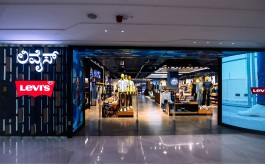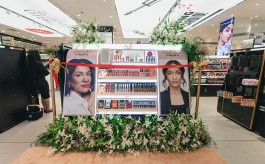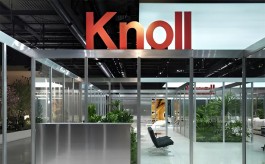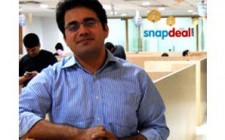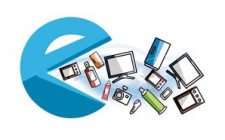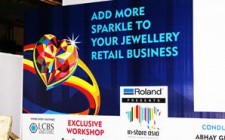Building retail brands
By VJ Media Bureau | Vjmedia Works | February 11, 2015
Ektaa Aggarwal, Creative Director, Landor, conducted an exclusive workshop on"œThe power of retail brands and how to build yours"during the just concluded In-Store Asia 2015 show that was held in Mumbai during February 5-7.
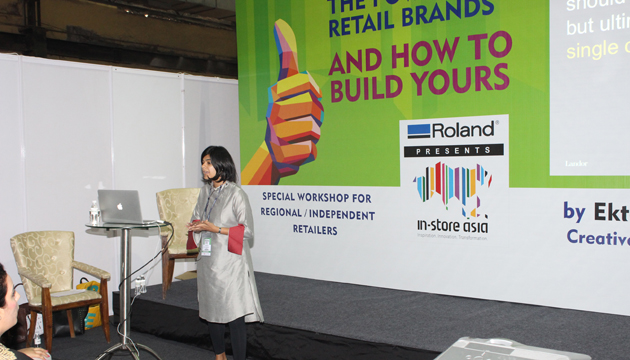 Ektaa Aggarwal, Creative Director, Landor, conducted an exclusive workshop on "The power of retail brands and how to build yours†during the just concluded In-Store Asia 2015 show that was held in Mumbai during February 5-7. This workshop was meant for all regional and independent retailers. Explaining the meaning of a brand, Aggarwal said that a brand is nothing but "relevant differentiationâ€. She said, "Brand is not just a logo. Brand is not just advertising. The word branding can be divided into two parts - brand + ing - wherein'brand' means relevant differentiation and'ing' signals customer experiencesâ€. To her, branding means all these - name, logo, look & feel, packaging, collateral, sales team, advertising, digital media, merchandising, promotion, sponsorship, publications & literature, word of mouth, public relations, call centre, products, services, new product development, new service development, innovation, retail environments, seminars, conferences and events, and community online.
Ektaa Aggarwal, Creative Director, Landor, conducted an exclusive workshop on "The power of retail brands and how to build yours†during the just concluded In-Store Asia 2015 show that was held in Mumbai during February 5-7. This workshop was meant for all regional and independent retailers. Explaining the meaning of a brand, Aggarwal said that a brand is nothing but "relevant differentiationâ€. She said, "Brand is not just a logo. Brand is not just advertising. The word branding can be divided into two parts - brand + ing - wherein'brand' means relevant differentiation and'ing' signals customer experiencesâ€. To her, branding means all these - name, logo, look & feel, packaging, collateral, sales team, advertising, digital media, merchandising, promotion, sponsorship, publications & literature, word of mouth, public relations, call centre, products, services, new product development, new service development, innovation, retail environments, seminars, conferences and events, and community online.Aggarwal stated that brand adds value in every industry and according to Millward Brown's Global Brand Contribution Index across industries, in the luxury goods industry, a brand contributed around 80-95% to business. In the spirits industry, the contribution of the brand was around 50-85%, consumer electronics 50-70%, white goods 30-50%, telecom 15-50%, financial services 5-35%, retail petrol 5-15%, utilities 8-20% and bulk chemicals 5-10%.
Speaking on the customer decision journey, Aggrawal said that as per our thinking, "Whenever there's a need, we first scan the market and then like to have a social influence by speaking with friends and relatives. Then depending upon our economic consideration, we evaluate options and then take the brand experience by finally making the purchase decision."
She presented a case study of Azva on targeting new customer segments and improving relevance. For Azva, Landor found an opportunity for branded gold jewellery in India. India is the largest market for gold jewellery in India. Azva wanted to an opportunity for branded gold wedding jewellery in India. Landor was brought on board to bring to life the opportunity from product conceptualization to brand experience.
"We wanted to create a brand that will make gold desirable to the Indian 19-25 year old bride-to-be so that gold falls into her consideration set at her wedding time. We straddled all Hindu communities of India, north to south, east to west and married the product designs to the brand identities,†said Aggrawal. The brand was made appealing to the changing Indian bride so that it could evolve, find respect and spin on tradition.
Finally, the name'azva' was decided which embodies the concept of the seven promises in a marriage and also coined from'ashva' - the seven horses that rode the chariot of the sun, according to Hindu mythology. "Azva has a strong connect to brand promise, is modern, easy to spell and say and also legally and linguistically clearâ€, says Aggrawal.
The final selected identity of Azva combines seven strokes that represent the seven promises coming together; the circular shape highlights the holistic and infinite nature of these promises, which create an eternal bond between the bride and groom. A contemporary identity that gives great flexibility to further build the story. The ruby pink colour is the new red for the modern Indian bride - it mirrors the culture and traditions that are characteristic of Indian weddings, while being distinctly modern. The gold colur is synonymous with weddings.
This impact enabled Azva emerge as a very desirable product identity in the wedding gold and jewellery market. Since its launch, Azva has gone from having a presence with top retailers in four cities to over 40 across India. It resonates in the minds of customers and investors, with over 3.6 lakh likes on facebook and over 22,500 followers on Twitter.
She said there are some critical factors for success. First, a brand should be inclusive but ultimately have a single decision maker. It should respect tradition, emotion and past experience but make a powerful case for change based on logic and magic. Then it should create brand guidelines that inspire and not create fear psychosis. "The brand should be launched internally first - people are the most powerful ambassadors - so ensure a brand change goes much deeper than a logo change. Use the brand as a flag bearer of business transformation and ensure the brand promise can be delivered across every touchpoint. Make the promise and keep the promise†shared Aggrawal.
The workshop was then divided into four parts - mind mapping, empathy mapping, reframing and creative questions. In mind mapping, participants were asked to explore every relevant angle of an unfamiliar topic. She rationalised that this would help them make explicit their current understanding of the topic, identify adjacent issues, themes and connections and also reveal gap in their knowledge, yield initial fields for further exploration with other sensing tools.
Empathy mapping allowed participants to identify a disconnect between what is said and done. She said that it enabled them to find intent and drivers behind what users have said and done, to translate into user needs. The session on reframing helped overturn conventional wisdom to discover new possibilities. According to Aggrawal, "Reframing helps you to expose conventional wisdom that stands in the way of progress. It exploits the inability of others to think differently; the contrarian thinker sees new directions where others are blinded by the dominant, yet unchallenged logic. Reframing trains your thinking to look at problems in fresh, unexpected ways to open up new solution spaces for new ideasâ€.
In the creative questions round, the participants of the workshop leveraged the new findings from their own sensing work and helped themselves to articulate a more relevant way to look at the original brief. This provided a direction and even painted the contours of their solution space that was their springboard to generate many new ideas.
Advertisement

